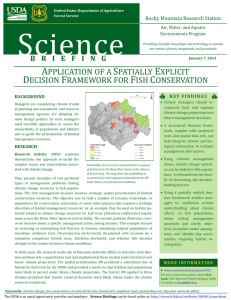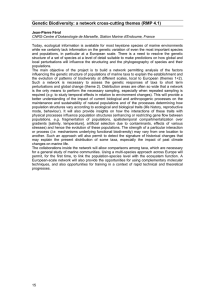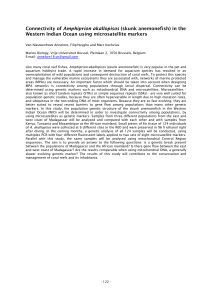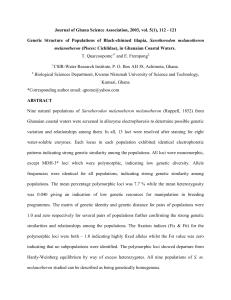Genetic Diversity Analysis of Bull Trout (Salvelinus confluentus) in
advertisement
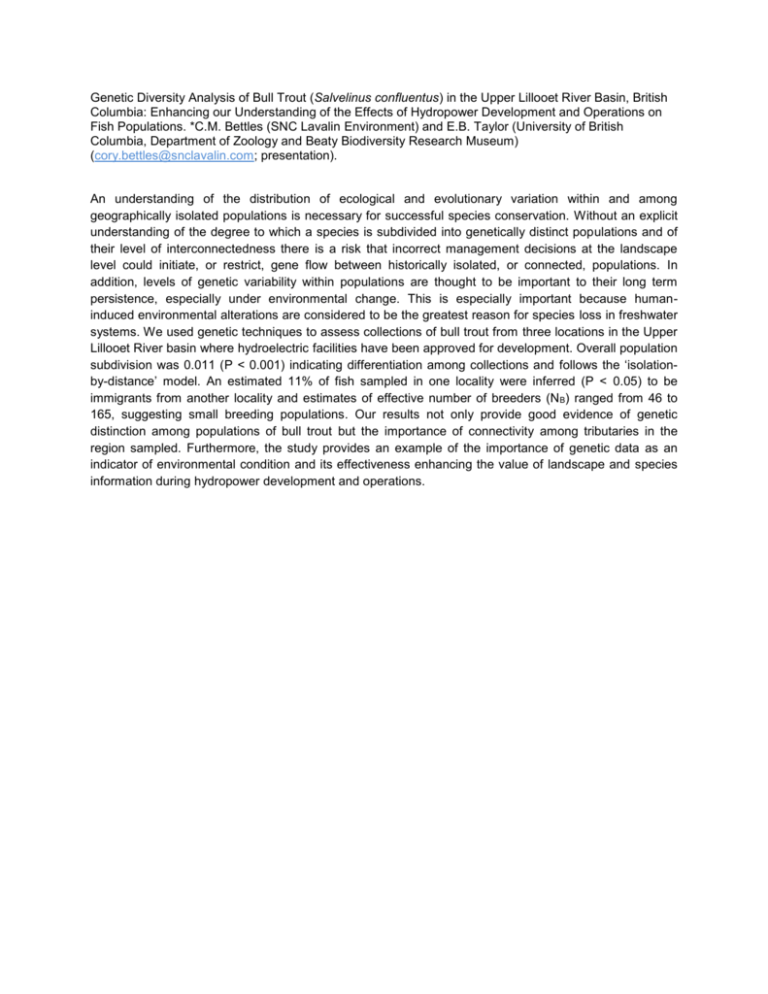
Genetic Diversity Analysis of Bull Trout (Salvelinus confluentus) in the Upper Lillooet River Basin, British Columbia: Enhancing our Understanding of the Effects of Hydropower Development and Operations on Fish Populations. *C.M. Bettles (SNC Lavalin Environment) and E.B. Taylor (University of British Columbia, Department of Zoology and Beaty Biodiversity Research Museum) (cory.bettles@snclavalin.com; presentation). An understanding of the distribution of ecological and evolutionary variation within and among geographically isolated populations is necessary for successful species conservation. Without an explicit understanding of the degree to which a species is subdivided into genetically distinct populations and of their level of interconnectedness there is a risk that incorrect management decisions at the landscape level could initiate, or restrict, gene flow between historically isolated, or connected, populations. In addition, levels of genetic variability within populations are thought to be important to their long term persistence, especially under environmental change. This is especially important because humaninduced environmental alterations are considered to be the greatest reason for species loss in freshwater systems. We used genetic techniques to assess collections of bull trout from three locations in the Upper Lillooet River basin where hydroelectric facilities have been approved for development. Overall population subdivision was 0.011 (P < 0.001) indicating differentiation among collections and follows the ‘isolationby-distance’ model. An estimated 11% of fish sampled in one locality were inferred (P < 0.05) to be immigrants from another locality and estimates of effective number of breeders (N B) ranged from 46 to 165, suggesting small breeding populations. Our results not only provide good evidence of genetic distinction among populations of bull trout but the importance of connectivity among tributaries in the region sampled. Furthermore, the study provides an example of the importance of genetic data as an indicator of environmental condition and its effectiveness enhancing the value of landscape and species information during hydropower development and operations.


